If you’ve landed on this page, chances are you have recently created a brand new Shopify website and are currently in search of the latest and most efficient SEO setup guide that works well with Shopify, with some impressive Shopify SEO tips to achieve organic growth for your brand new Shopify store. Am I right? Good thing we got you covered like your favorite leftovers on a Sunday evening!
Before we dive into the deep end of major SEO tips and strategies for Shopify, we should cover the basics of what SEO actually is and why it is important to integrate it into your Shopify store.
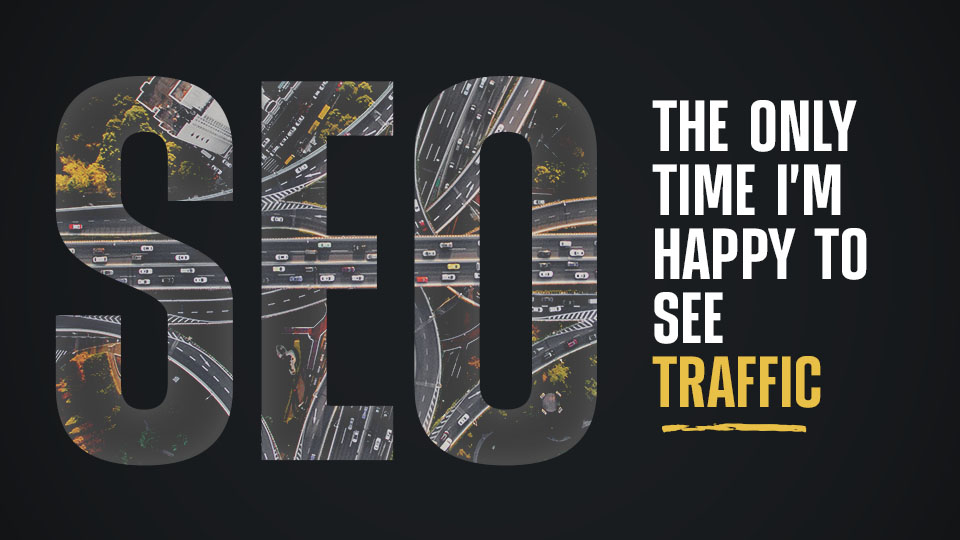
Search engine optimization, also known as SEO, is the process of reforming your site to rank higher in the search engine result pages (SERPs) and achieve higher visibility in searches relevant to your brand and/or niche. This process allows you to attract attention from new and existing consumers to your brand. They say you can’t have your cake and eat it too. Well, if you implement a SEO plan, you can actually!
SEO gives you the best of both worlds, making it that much easier for prospects to find you, and allowing friendly “visitations” from our search engine bot friends who love to crawl, index, and rank websites. SEO organically generates high-quality traffic, which ultimately leads to the growth of qualified leads and sales for your business. Having expert strategies and tips for e-commerce SEO will do you justice in the long run, trust me.
An SEO expert watches TV, television, TV shows, programs, videos, video, broadcasts, stations…. Do you catch my drift?
Shopify SEO Tip #1 – Keyword Research
Think of a time when you wanted a particular pair of shoes. For this example, let’s say you were looking for black and white sneakers to go with your new favorite outfit. Think about what you would type into a search engine, such as Google, during this process. You wouldn’t just type in the word sneakers to search for results, because what you want are sneakers in a certain color. Odds are your search would be a little more specific, listing the colors, gender (for men, for women), and possibly even shoe size, to ensure more accurate results for what you want to buy.
See what I’m getting at here? To set up SEO for your Shopify store, you have to put yourself in the shoes of your customers and discover all the keywords they are likely to use in search of the product you sell. How do you do this? First things first….
Don’t make the mistake of attempting to rank for the #1 term in your industry…. Not yet, at least.
I understand the excitement of wanting to rank for the #1 term like sneakers, however, with no authority on your site, attempting to rank for the #1 term is like fishing without a fishing pole.
Put it this way – your goal is to reel in that fish (customers), but without a fishing pole (authority), you have absolutely no way of even baiting the fish (grabbing customers’ attention).
You have to build authority first. Once you build authority, you can then attempt to use a different form of “bait”. For starting off, your “bait” should be longtail keywords. Longtail keywords are more specific, longer, and generally have lower competition, but higher conversion rates. You can get a better understanding with this graph below, inspired by Backlinko.
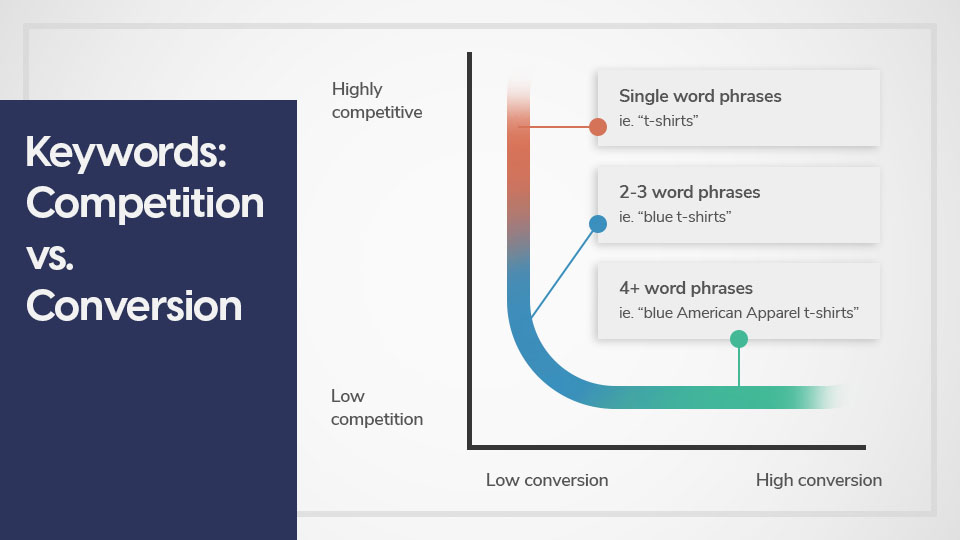
Ubersuggest by Neil Patel is an awesome tool you can use when conducting keyword research. You can get a clear sense of the search volume, SEO difficulty, paid difficulty, and cost per click (CPC) in the keyword overview section.
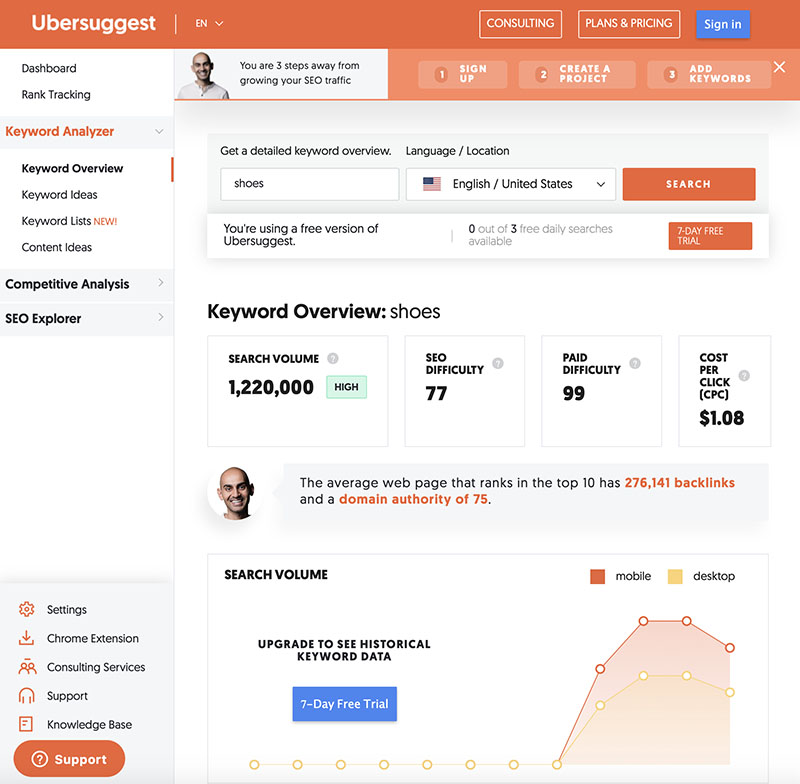
Latent Semantic Indexing (LSI) is also an excellent method for detecting connections with terms and concepts associated with each other. LSI keywords are phrases relating to the keyword, making it easier for search engines and users to understand what your site is about. The LSIgraph tool is free to use and offers you an extensive amount of suggestions and ideas for phrases and words related to the keyword you want to rank for.
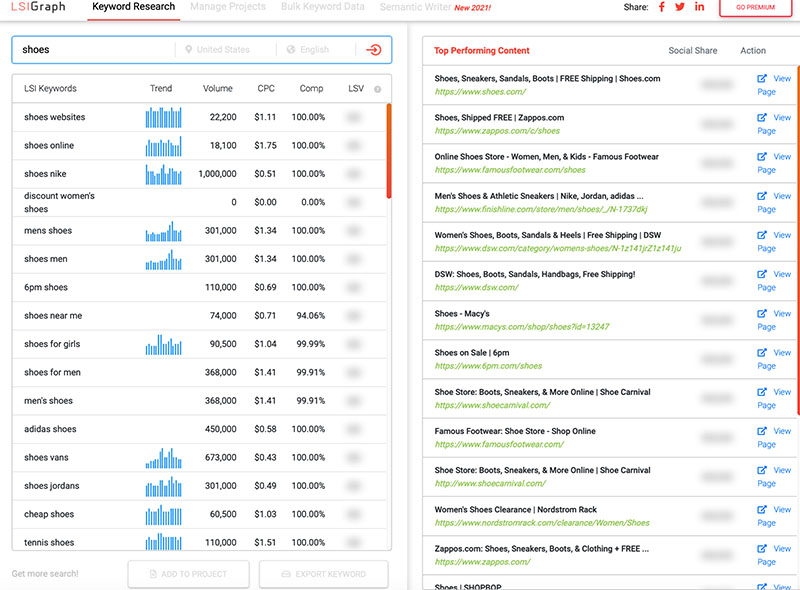
You can certainly use Google itself by searching for a keyword and analyzing the suggestions that pop up instantly in the search box.
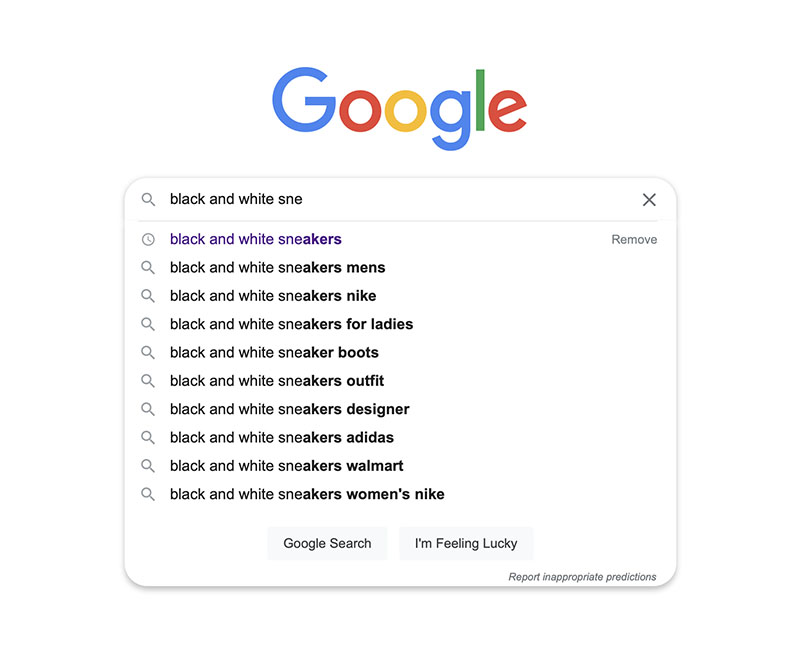
Or even scroll down to the bottom of the page where it shows “searches related to”.
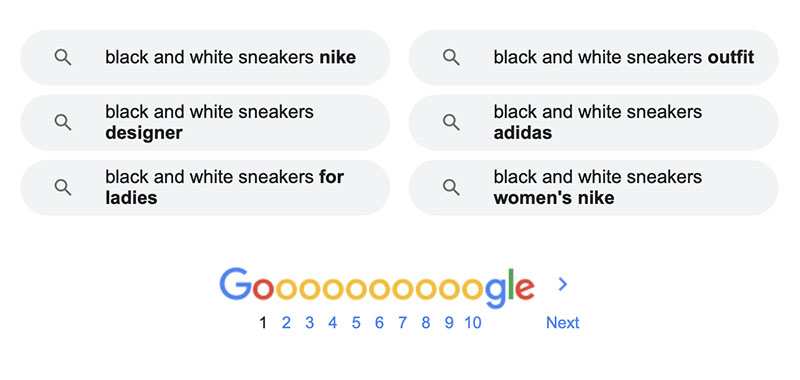
Once you get your keyword research in place, your best bet is to start keyword mapping!
Shopify SEO Tip #2 – Site Structure
One of the remarkable things about starting a new Shopify website is that SEO best practices are automatically followed, as Shopify has integrated SEO features. So you don’t have to worry entirely about your site structure. However, there are some steps you can take to improve these features on your own, the icing on the cake, so to speak.
- Optimize the navigation of your online store.
- File names for your images should be as descriptive as possible.
- When using internal links, make sure you are using descriptive link text rather than linking text that says click here.
- Add and optimize meta tags for your new Shopify website. Check out this Google Organic Listing Previewer to see what your organic listing will look like before you do so!
And of course, we’ll take this opportunity to pause and say that if this all feels like a little much, there’s no smarter move than getting professionals involved!
Shopify SEO Tip #3 – Content Marketing
“Why do SEO’s hate watery oatmeal?… Thin content”
– Erik Newton
Content, content, content… I can’t say this word enough! To want SEO to work in the long run, you have to have outstanding content. Having “thin content” only adds insult to injury. When you implement this Shopify SEO tip to your new Shopify website, you want to be sure that you don’t cut any corners.
Let’s give an example:
It’s a bright sunny Sunday morning in July. You wake up and decide it’s a perfect day to go to the beach. (P.S. I promise this whole “beach” story will relate to SEO content marketing). You live 45 minutes away from the beach, so you will need some form of transportation to get there. Once ready, you get in your car and start driving. You hit the main roads and even some highways, but eventually you get there. As soon as you get there, you feel that the whole world has lifted from your shoulders. You’re cheerful, relieved, excited and ready to catch a glorious tan in the sun!
Okay, you may think I’m going on a wild goose chase with this example, but let me break it down in SEO terms.
Your potential customer is the “you” in the example above who gets into the car to eventually get somewhere. You knew when you woke up you wanted to go to the beach. Well, your customer knows what they want, but doesn’t know where to go or how to get there.
In the example above, you were able to get to the beach by “hitting the main roads and even some highways”. This is where the content marketing comes in. You have to build these roads and these highways to direct your customers towards your Shopify store.
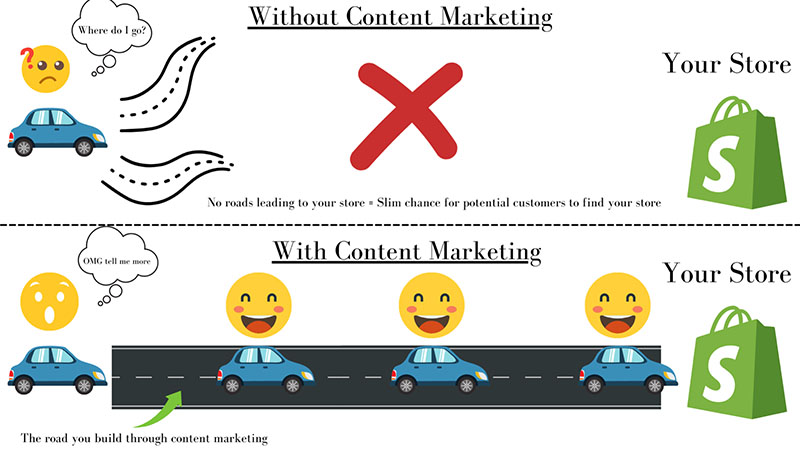
Eventually, with your guidance through content marketing, you will steer your potential customers on the road of becoming actual customers where they will feel as cheerful, relieved, excited and ready to purchase and use your product as you were to catch that glorious tan!
Quick note: Always avoid creating any spam-like content at all costs! You want to build trust and authority, so stay away from doing any “shady” black hat SEO tactics.
Shopify SEO Tip #4 – Search for Opportunities
Searching for opportunities can be one of the best ways to improve SEO for your new Shopify website. You can open the door to opportunities by building relationships with websites, bloggers and influencers.
When you start building relationships with others, you can potentially open the door to people linking your Shopify store in their own blog posts, websites, and so on.
You also want to build relationships with your customers! You can’t expect your SEO efforts to skyrocket if you have poor customer service and negative reviews. Shopify Ping is a fantastic app that can help you stay on track with this! The app is free and allows you to chat easily with both shoppers and your team to boost sales and give your customers a better purchasing experience.
SEO setup for Shopify is done with hard work, dedication and commitment. As with any other, there will be trial and error phases, sleepless nights, and time-consuming processes that will ultimately be 100% worth it in the end. If you’re feeling stuck or need some guidance along your SEO Shopify journey, we encourage you to visit our SEO agency page where you can fill out a proposal. We’ll have your back and get you up and going in the right direction.


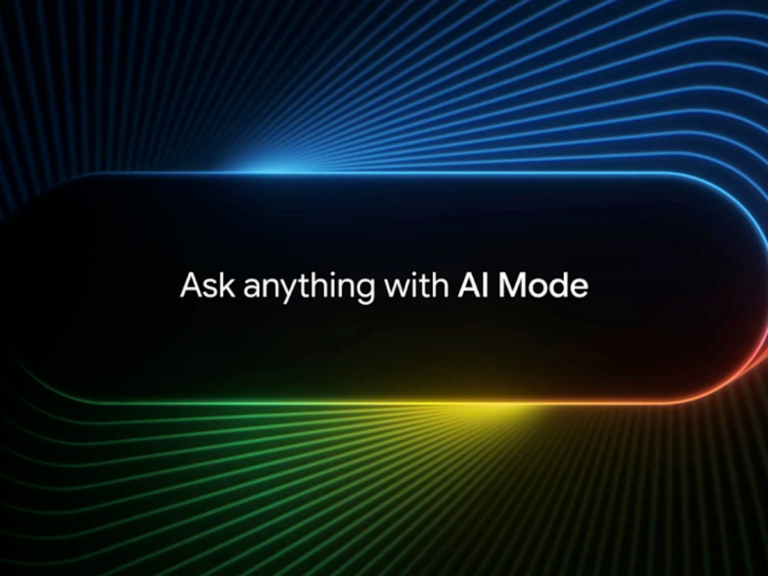
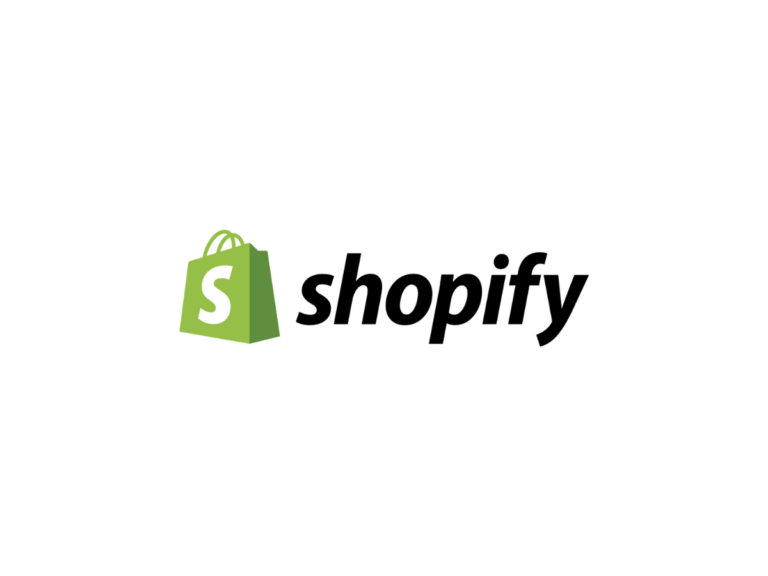

no replies